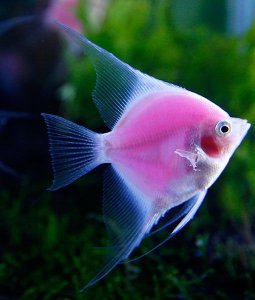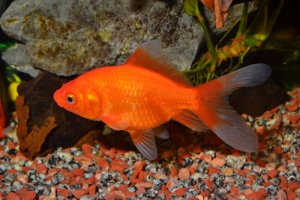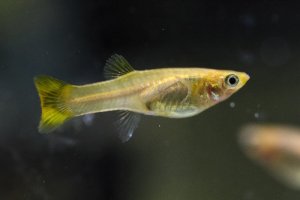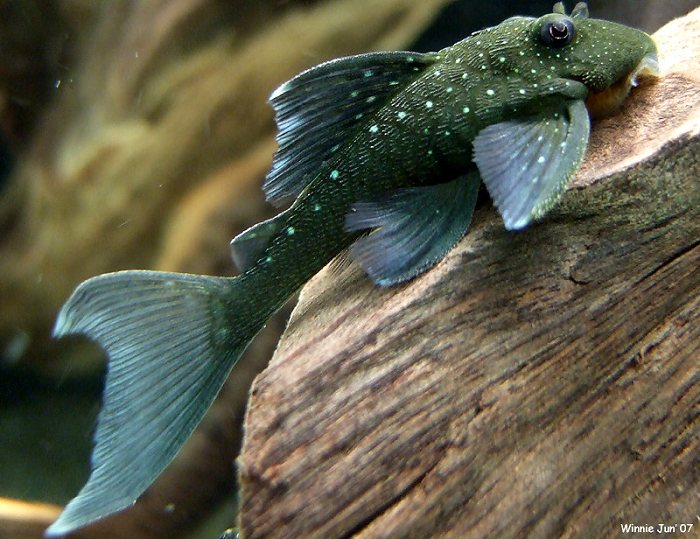
Pleco fish are enigmatic, bottom-dwelling fish that eat algae and as a result, are popular amongst aquarists for the way they tidy up the rocks, gravel, and other tank features. Plecos come from a huge variety of habitats across the Amazon and Orinoco river basins. There’s so much more to them than algae eating though, and pleco fish are fascinating to watch, not just with their unique shape and shy, gentle temperament, but also the huge variety of patterns they come in.
Pleco Fish General Requirements
Pleco fish are hardy and can adapt to many different community tanks. You don’t have to use a particularly strong filter, and as a general rule of thumb a filter 4x the tank capacity works for most plecos. Where pleco fish differ is generally on tank size, and if they need a powerhead to create a stream of moving water.
Otherwise, they even do well with similar tankmates, including guppies, crayfish, tetras, and other schooling fish.
1. Feeding
All plecos are bottom-dwelling fish that eat an omnivorous diet. As a result, it’s best to feed them a combination of algae wafers, sinking pellets, frozen protein like tubifex worms or brine shrimp, and supplemented blanched vegetables.
2. Ideal Pleco Fish Habitat
For pleco fish, it’s not a good idea to use the same kind of gravel that you would for a goldfish or betta fish tank, for example. These fish move along the bottom and often hoover up food from it with their sucker mouths, therefore soft sand or smooth stones work best.
Therefore, gravel can not only provide a choking hazard but can even damage the delicate stomach of some of the more delicate pleco fish species.
Author’s Note: With plecos, you can really get into aquascaping your tank! Pleco fish love to hide amongst rocks and in caves or behind shelters. Provide this with plenty of Amazonian plants and a variety of spaces on top of and between rocks and stones.
7 Recommended Pleco Fish For Your Aquarium
1. Zebra Pleco
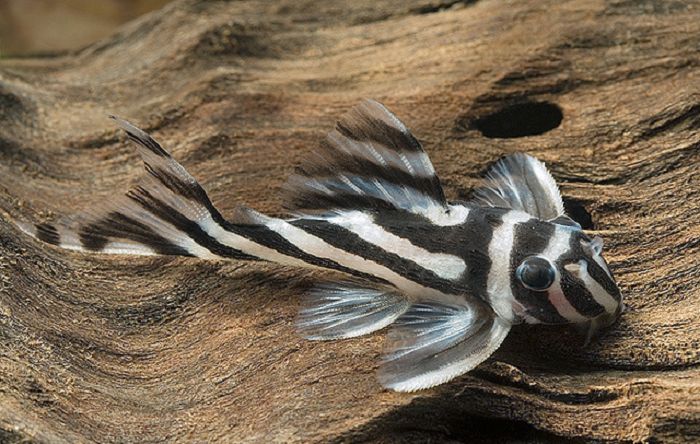
Origins:
The zebra pleco, also known as the imperial pleco, comes from Brazil’s Xingu River – a tributary of the Amazon that is in fact home to several pleco fish that are covered on this list. The zebra pleco is in fact localized to the big bend area of the river where it enjoys fast-flowing water and clings onto rocks and stones as well as eating detritus from the riverbed.
Zebra Pleco Appearance:
True to its name, the zebra pleco is a striking fish that is covered in black and white stripes. Although these may make it stand out in captivity, in the wild, they help it hide in dappled sunlight.
Unfortunately, the appearance of the zebra pleco made it a highly valuable commodity in the 90s when it was first discovered and it is now endangered in the wild. However, it is now a commonly captive-bred fish species, unlike some of the other plecos on this list, although it is still relatively hard to track down for your aquarium.
Basic profile:
| Tank capacity | 30 gallons (113 liters) |
| pH | Neutral |
| Filter | Minimum 4x tank capacity |
| Maintenance | 30% of the water once a week |
| Water hardness | 2-12 dGH |
| Lifespan | 10-15 years |
| Max size | 3-4” (7-10 cm) |
| Temperature | 80-85 F (26-29 C) |
| Difficulty level | Intermediate |
Tankmates For Your Zebra Pleco
Any sort of clearwater Amazonian species that live further up the water column can make good tankmates for your zebra pleco. These fish are shy, and they are one of the smaller pleco fish, so don’t be surprised if they need caves and hiding spaces to keep out the way of other fish.
However, small schooling fish like tetras, zebra danios, and even some Amazonian cichlid species can work well with the zebra pleco. They can also do well with shrimp such as cherry shrimp, barbs, and even otocinclus catfish.
Things To Note:
As mentioned above, these plecos are smaller than some other pleco species of the Amazon. They are sensitive and shy fish and as a result, won’t take well to stress, so provide plenty of hiding places.
2. Gold Nugget Pleco
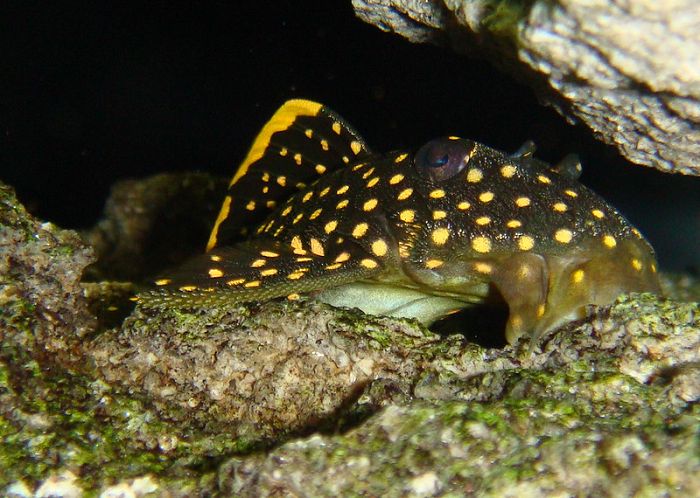
Origins:
The gold nugget pleco comes from the Xingu River in Brazil, specifically a region called the Volta Grande, which is home to fast-flowing rapids. The Xingu is a clear-flowing stream, unlike some of the blackwater tributaries in South America. Therefore, the gold nugget pleco needs fresh, clear water that is of a neutral pH.
Gold Nugget Pleco Appearance
This is a really striking fish that is a deep black color with pale, lemon-yellow spots all over its body. Its dorsal fin and tail fin also have a yellow fringed edge. Size-wise, these are really large plecos! They can grow from 7-10 inches or 18 – 25 centimeters. Otherwise, they look much like other plecos with a suckermouth, bulbous head, and plated body.
Basic profile:
| Tank capacity | Minimum 50 gallons (189 liters) for one fish, but 60 gallons (227 liters) is ideal |
| pH | Neutral |
| Filter | Minimum 4x tank capacity |
| Tank cleaning | 30% of the water once a week |
| Water hardness | 6-10 dGh |
| Lifespan | 5 yrs, but can reach 6-7 |
| Temperature | 74 -78 F (23-26 C) |
| Maximum size | 7-10” (17-25 cm) |
| Difficulty level | Intermediate |
Tankmates For Your Gold Nugget Pleco
As they are bottom-dwelling, they are great for a community tank with fish that live higher up in the water column. Other species from Brazil such as lemon, bloodfin, and rummy nose tetras make perfect tankmates as they require a similar water temperature, pH, and hardness.
Things To Note
As they come primarily from the wild, gold nugget plecos are not always in great condition when you get them home. For the first few weeks, pay special attention to them and keep note of any indications of disease like rubbing up against the glass. After a few weeks of keeping them regularly fed, they should be happy and healthy again.
3. Blue Phantom Pleco
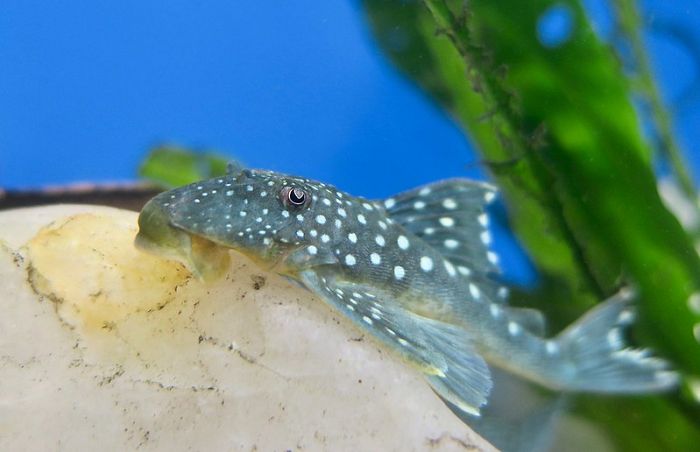
Origins:
The blue phantom pleco is native to the headwaters of the Amazon and Orinoco rivers in Venezuela and northern Brazil. These are fast-flowing streams with many rocky crevices in which this fish enjoys hiding.
Blue Phantom Pleco Appearance:
A beautiful spotted pleco, the blue phantom pleco has a dark blue body and white polka dots that cover it from its head to the extremities of its fins.
Maximum blue phantom pleco sizes:
As one of the larger varieties of pleco, the blue phantom pleco fish can grow up to 7” or 17 cm. This means it’s great to plan your tank in advance and give them space to grow. Leave plenty of room on the floor, and ensure the hiding spaces you create as well as gaps between plants, rocks, and driftwood are large enough that they will still fit when they are fully grown.
Basic profile:
| Tank capacity | Min 50 gallons (189 liters) |
| pH | Neutral |
| Filter | Minimum 4x tank capacity |
| Maintenance | Weekly water changes of 30% |
| Water hardness | 2-12 dGH |
| Temperature | 74-84 F/23-28 C |
| Lifespan | 10-15 years |
| Max size | 7 inches (17 cm) |
| Difficulty level | Intermediate |
Tankmates For Your Blue Phantom Pleco:
The blue phantom pleco is active yet peaceful and can adapt well to both a tank of peaceful fish as well as semi-aggressive fish such as angelfish that live at different levels in the water column.
They are ideal for an Amazonian tank that has other fish that require the same warm water conditions. These can include certain kinds of cichlids, tetras, and hatchet fish.
Things To Note
Blue phantom plecos are not bred in captivity and therefore like all other wild-caught fish will need special attention when you first get them. It’s best to acclimatize them slowly and keep especially vigilant for any signs of disease in the first few weeks.
4. Green Phantom Pleco
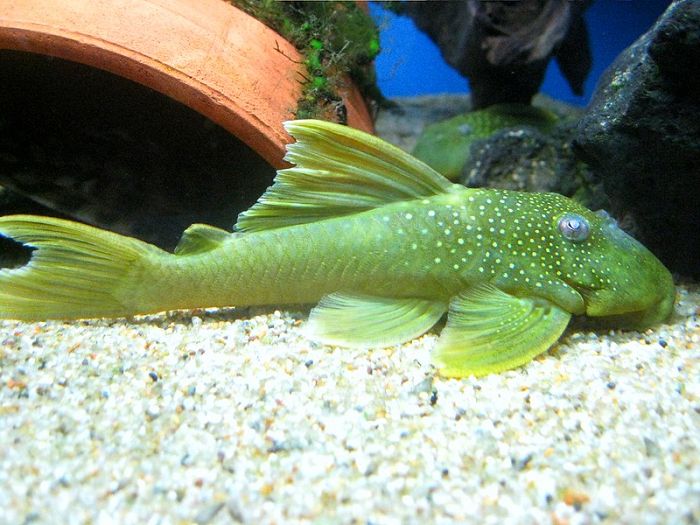
Origins:
The green phantom pleco, just like the similar blue phantom pleco, is found mostly in river tributaries in Venezuela. These are fast flowing but can be blackwater or clearwater, either way, a fast flowing current in your tank that is aimed at the areas phantom plecos love (like rocks and caves) will keep them happy, and you can add driftwood to mimic the natural organic matter in their habitat.
Green Phantom Pleco Appearance:
Like the blue phantom pleco, this is a spotted pleco but instead of dark blue, it is a vivid olive green color. It has a large flat dorsal fin and the sucker mouth characteristic of all plecos, however, occasionally the spots may not reach all the way along to the body to the tail. Apart from this, it has the same plated stomach as other plecos.
Maximum Green Phantom Pleco Sizes:
The green phantom pleco is one of the larger plecos on this list. In fact, it can grow up to 6-7” inches (15-17 cm). Giving them plenty of space to move around on the bottom of the tank is very important. Just like other plecos from fast-moving rivers, the green phantom pleco also appreciates a water flow at the bottom of the tank.
Basic profile:
| Tank capacity | Minimum 50 gallons (189 liters) |
| pH | Neutral to mildly acidic (min 6.5) |
| Filter | Minimum 4x tank capacity but benefits from a water powerhead for additional circulation |
| Maintenance | 30% water changes once a week are ideal |
| Water hardness | 2-12 dGH |
| Lifespan | Up to 10 years with proper care |
| Max size | 6-7” or 15-17 cm |
| Temperature | 77-86 F (25-30 C) |
| Difficulty level | Intermediate |
Tankmates For Your Green Phantom Pleco:
Like the blue phantom pleco, it’s great in an Amazonian tank with angelfish, hatchetfish, or discus fish. It can do well in either a tank of peaceful fish or semi-aggressive ones, however, it’s best not to combine it with other bottom-dwelling fish like certain types of cichlids or other catfish of any kind. This is a pleco that can occasionally become territorial!
Things To Note
The green phantom pleco can actually be one of up to three species all of which have similar coloring. As plecos are not well classified by science, aquarists instead use an ‘L number’ for identifying Loriicarid catfish.
5. Royal Pleco
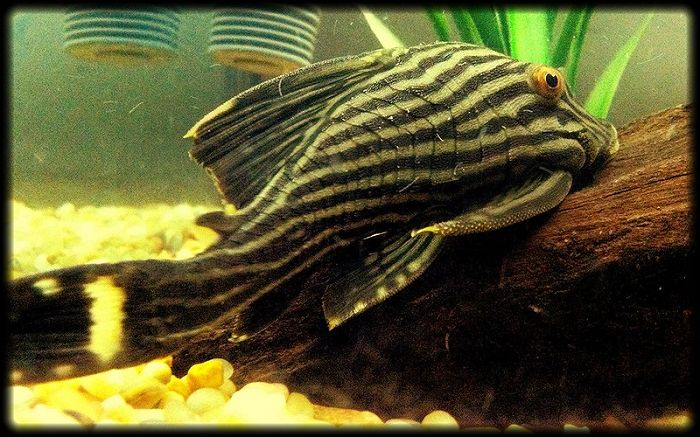
Origins:
Northern South America such as Colombia, Venezuela, and North Brazil, where it is found in tributaries of rivers like the Amazon and Orinoco.
Royal Pleco Appearance:
True to its name, the royal pleco has a regal appearance of black with gold stripes and startling red eyes. It is truly a very eye-catching addition to any aquarium and can add lots of extra interest to the bottom levels of your tank. Its patterning has also given it the alternative aquarium name of ‘watermelon pleco.’
Basic profile:
| Tank capacity | This is one of the largest plecos therefore a minimum of at least 50 gallons (189 liters) but ideally 60 gallons (227 liters) is recommended |
| pH | Neutral to slightly acidic |
| Filter | Flow rate 4x tank capacity |
| Maintenance | 30% of the water once a week |
| Water hardness | 2-12 dGH |
| Lifespan | 10 years if well kept |
| Max size | 16-17” (40-43 cm) |
| Temperature | 80-85 F (26-29 C) |
| Difficulty level | Intermediate to advanced |
Tankmates For Your Royal Pleco:
So long as you don’t include other plecos, these fish do well with a variety of other Amazonian tankmates. These can include hatchetfish and tetras such as the bloodfin, rummynose, lemon, and neon tetras, but could also mean small cichlids such as the ram cichlid. On the larger side, angelfish can make a great Amazonian tankmate.
Author’s Note: As plecos get on well with angelfish, you may wonder if they can also co-exist with discus fish. The truth is, discus fish have a slimy coating on their scales that can prove appealing to the algae-eating pleco. There are reports of pleco fish latching onto the side of a discus and not letting go. Plecos and discus fish CAN get on in a large tank, it’s just that this works better with smaller plecos like the zebra pleco, as opposed to large ones like the royal pleco.
Things To Note
An amazing fact about these catfish is that they can actually eat wood! They are one of the few species of fish in the world that can do this and they normally feed on driftwood in their natural habitat. In fact, they use symbiotic gut bacteria to help digest this, and as a result, it is actually an important and non-optional part of their diet.
6. Clown Pleco
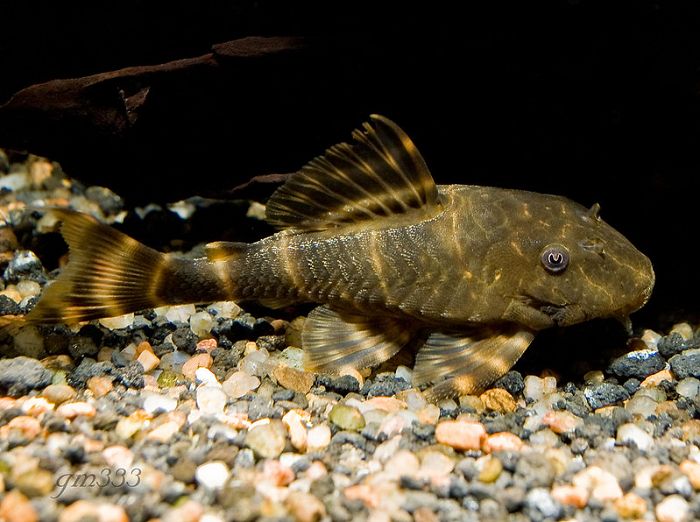
Origins:
The clown pleco is a mottled-looking pleco that comes from several different rivers in Venezuela and Colombia. What makes its natural habitat stand out is that these rivers are full of driftwood, and the clown pleco has developed its coloring to blend in in this kind of environment. However, it also means that like the royal pleco, the clown pleco is a rare driftwood-digesting fish.
Clown Pleco Appearance
One of the most stunning things about the clown pleco is the patterning on its body, which consists of a series of wavy bands in a yellowish-white color. The rest of it is a deep black, making for a fish that can’t help but attract attention.
Basic profile:
| Tank capacity | Min 20 gallons (76 liters) but 30 gallons (114 liters) ideal |
| pH | 6.5-7.5 |
| Filter | 4x tank capacity |
| Maintenance | 30% every 1-2 weeks |
| Water hardness | Approx 10 dGH |
| Lifespan | 10-12 years |
| Max size | 3-4” (7-10 cm) |
| Temperature | 74-82 F (23-27 C) |
| Difficulty level | Intermediate to advanced |
Tankmates For Your Clown Pleco:
Like with other plecos, most tankmates which also suit an Amazonian blackwater environment will be perfect for the clown pleco! However, the only thing to note is that as these guys are smaller and shyer than some other pleco species if you want to introduce large tankmates like angelfish or discuss fish, make sure you have enough room for your clown pleco to keep separate from them.
Things To Note
Like the royal pleco, this is a rare kind of fish that can digest wood, which it does with the help of specialized gut bacteria. That means to keep your clown pleco in top health, this has to be included in their diet. Generally, the best idea is to add plenty of driftwood to the tank which your fish can then hang onto with its sucker mouth and digest to their hearts’ content. Placing this in out-of-the-way areas is also a good idea because these small fish can be quite shy, and it helps them feel secure when feeding.
7. Peppermint Pleco
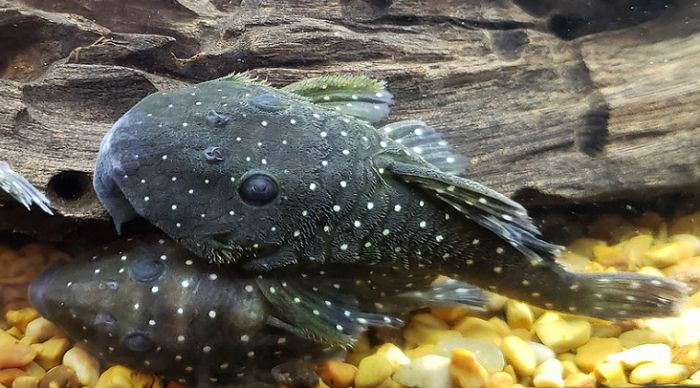
Origins:
Unlike some pleco on this list that comes from blackwaters in Northern South America, this fish comes from the Xingu River, a southern tributary of the Amazon, in Brazil. Its natural habitat is fast flowing and rocky, and it generally clings on top rocks with its sucker mouth.
Peppermint Pleco Appearance:
This is a great pleco if you want something simple, striking, and low-key to add interest to the bottom level of a tank. The peppermint pleco is a black color with small white spots all over its body. Apart from this, it has the same armored body, tapered shape, and sucker mouth as other plecos. It also has a large dorsal fish that it can raise up and down.
Basic profile:
| Tank capacity | Min 50 gallons (189 liters) |
| pH | Neutral |
| Filter | Minimum 4x tank capacity |
| Maintenance | 30% of the water once a week |
| Water hardness | 10-12 dGH |
| Lifespan | Up to 10 years |
| Max size | 7”/18 cm |
| Temperature | 78-84 F (26-29 C) |
| Difficulty level | Intermediate |
Tankmates For Your Peppermint Pleco:
Peppermint plecos are great with schooling fish such as tetras that share a different tank level. These fish, which also inhabit an Amazonian ecosystem, will stay out of your pleco’s way and coexist peacefully.
These fish do not always work well with fish from blackwaters such as angelfish due to needing subtly different conditions in terms of water hardness and acidity. They can survive together, it’s just not an ideal pairing.
Things To Note
Like other plecos from fast-moving rivers, the peppermint pleco enjoys a water stream that can be created by angling a powerhead at the areas it is most likely to cling onto rocks.
Author’s Note: You will find that your fish quickly learns the best places to enjoy conditions similar to its natural habitat. Watch for where your fish likes hanging out – it’s a tip that the conditions are preferable for them. All fish are different, and once you know what they like, you can even add things to the tank to enrich it.
Common Pests And Diseases Of Pleco Fish
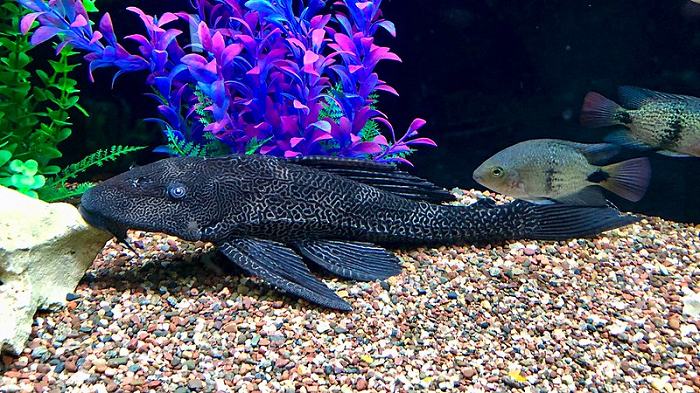
1. Bacterial And Fungal Infections In Pleco Fish
Pleco fish can be vulnerable to bacterial infections. This can be because they are sensitive to water quality, like any other fish. Dealing with bacterial infections in pleco fish is not that different from other species. You can isolate the fish in a separate tank and give them an antibacterial treatment. However, prevention is always better than cure and most bacterial infections come from poor water quality.
2. Digestive Upset
Pleco fish generally do well on a diet of algae wafers, frozen protein, algae that they find on the tank walls, and supplemented vegetables. They are omnivorous and they always do best with variety in their diets.
However, some of them are more sensitive than others. It’s a good idea to include driftwood in all pleco fish tanks, but the wood-eating species like the clown pleco and royal pleco need it especially. Pleco fish can sometimes develop a bloated stomach if they don’t get enough fiber. If this happens, you can reduce feeding, and give them half a deshelled pea.
Final Thoughts
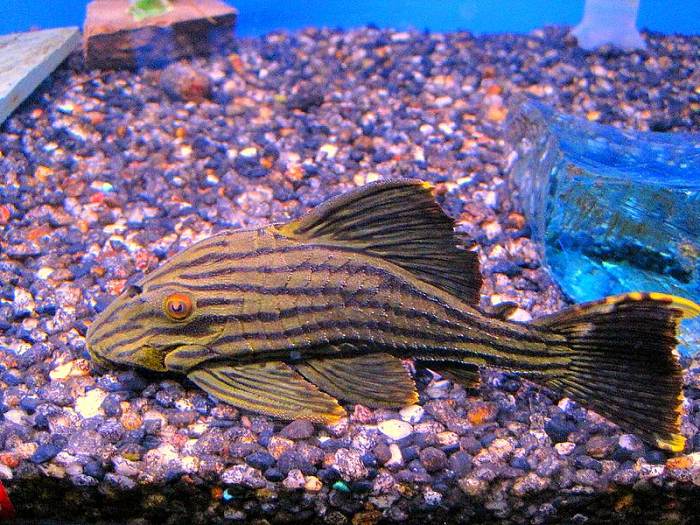
Pleco fish are some of the most interesting catfish you can add to an aquarium due to their striking patterns and the fact they grow to relatively large sizes. As a result, they are very good at seizing attention even when they are used simply as tankmates, for example, in a tank full of angelfish. Either way, they are fascinating to watch and although some need an advanced aquarist, they are relatively easier to take care of than their exotic looks might imply.


